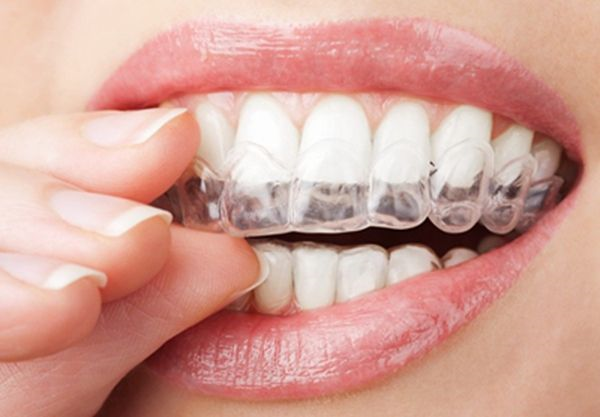This article is the preparation instructions for the standard of the diaphragm used for Aligners. After reading, you can understand the following questions: What is the principle of invisible orthodontics? What are the advantages of invisible orthodontics? What is the amount of invisible braces per patient? What is the material composition of invisible braces?
1、 Introduction
In the process of orthodontic treatment, any force applied to the orthodontic teeth to make them move will inevitably produce a force with opposite direction and the same size at the same time. The function of orthodontic appliance is to provide this force. In addition to the conventional treatment of tooth deformities with orthodontic wire and orthodontic brackets, in recent years, due to the improvement of patients’ requirements for beauty and comfort, the bracketless orthodontic appliances began to be widely used in clinic. This treatment method is to use thermoplastic membrane to make personalized appliance. Because the appliance is generally colorless and transparent, it meets the patient’s daily aesthetic requirements. Moreover, this kind of appliance can be removed and worn by patients themselves, which is more convenient for patients to meet the needs of tooth cleaning and beauty than traditional appliances, so it is welcomed by patients and doctors.
The bracketless appliance is a transparent elastic plastic device designed and made by computer to correct the position of teeth. It achieves the purpose of tooth movement by continuously moving the teeth in a small range. Generally speaking, it is a kind of transparent braces used to correct teeth. After each tooth movement, change another pair of appliance until the tooth moves to the required position and angle. Therefore, each patient may need 20-30 pairs of appliances after a course of treatment of 2-3 years. With the development and continuous improvement of this technology in the past 20 years, most of the simple cases that can be completed by fixed orthodontic technology (steel braces) can be completed by brackets free orthodontic technology. At present, the bracket-free technology is mainly used for mild and moderate tooth deformities, such as permanent tooth crowding, tooth space, patients prone to caries, patients with relapse after orthodontic treatment, patients with metal allergy, individual tooth dislocation, anterior crossbite, etc. Relative to metal teeth
The set uses arch wire and bracket to correct the teeth. The bracket-free orthodontic technology corrects the teeth through a series of transparent, self-removable and nearly invisible bracket-free appliances. Therefore, there is no need for traditional orthodontic appliances to use the metal arch wire fixed on the dentition without the ring braces and brackets, which is more comfortable and beautiful. The bracket-free appliance is nearly invisible. Therefore, some people call it invisible appliance.
At present, bracketless orthodontic appliances are mostly made of thermoplastic membrane on the patient’s oral dentition model by heating and pressing. The diaphragm used is a thermoplastic polymer. It mainly uses copolyesters, polyurethane and polypropylene. Specific commonly used materials are: thermoplastic polyurethane (TPU), alcohol-modified polyethylene terephthalate (PETG): generally polyethylene terephthalate 1,4-cyclohexanedimethanol ester, polyethylene terephthalate (PET), polypropylene (PP), polycarbonate (PC). PETG is the most common hot-pressed film material on the market and is relatively easy to obtain. However, due to different molding processes
The performance of diaphragm from manufacturers also varies. Thermoplastic polyurethane (TPU) is a hot material in the application of stealth correction in recent years, and excellent physical properties can be obtained through certain proportion design. The materials independently developed by the invisible correction company are mostly based on thermoplastic TPU and modified with PET/PETG/PC and other blendsTherefore, the performance of the diaphragm for orthodontic appliance is crucial to the performance of the bracketless appliance. Since the same kind of diaphragm can be processed and manufactured by different orthodontic manufacturers (mostly denture processing enterprises), and many mechanical properties of the fabricated orthodontic devices are difficult to evaluate, if the diaphragm used to produce the orthodontic device has not undergone performance and safety evaluation, it is bound to cause the problem that each orthodontic device manufacturer needs to conduct comprehensive and repeated evaluation of the orthodontic device, especially the safety evaluation. Therefore, in order to avoid the problem that different orthodontic appliance manufacturers repeatedly evaluate the physical, chemical and biological properties of the same diaphragm (similar to the materials used to make dentures, such as denture base resin, etc.), and save resources, it is necessary to standardize the performance and evaluation methods of the diaphragm used for orthodontic appliances and formulate standards. 、
According to the inquiry, there are 6 kinds of products with orthodontic appliance diaphragm medical device product registration certificate, including 1 domestic and 5 imported. There are nearly 100 enterprises producing orthodontic appliances without brackets.
The main manifestations of clinical failure of the diaphragm for orthodontic appliance without bracket are: fracture/tear, loosening after applying orthodontic force, poor treatment effect or long treatment period, etc. In addition, patients feel discomfort or pain sometimes occur.
Because the effect of orthodontic treatment without brackets is not only related to the performance of the diaphragm used, but also has a vital impact on the accuracy of the doctor’s taking the patient’s oral impression or scanning the oral condition, the accuracy of the model, the embodiment of the doctor’s treatment design plan at each stage, especially on the appliance designed with computer software, the accuracy of the appliance production, the position of the support point of the force, and the patient’s compliance with the doctor, These effects cannot be reflected in the diaphragm itself. Therefore, we set out to control the quality of the diaphragm used in orthodontic appliances, including the effectiveness and safety, and formulated 10 performance indicators including “appearance”, “smell”, “size”, “wear resistance”, “thermal stability”, “pH”, “heavy metal content”, “evaporation residue”, “Shore hardness” and “mechanical properties”.
Post time: Mar-09-2023



